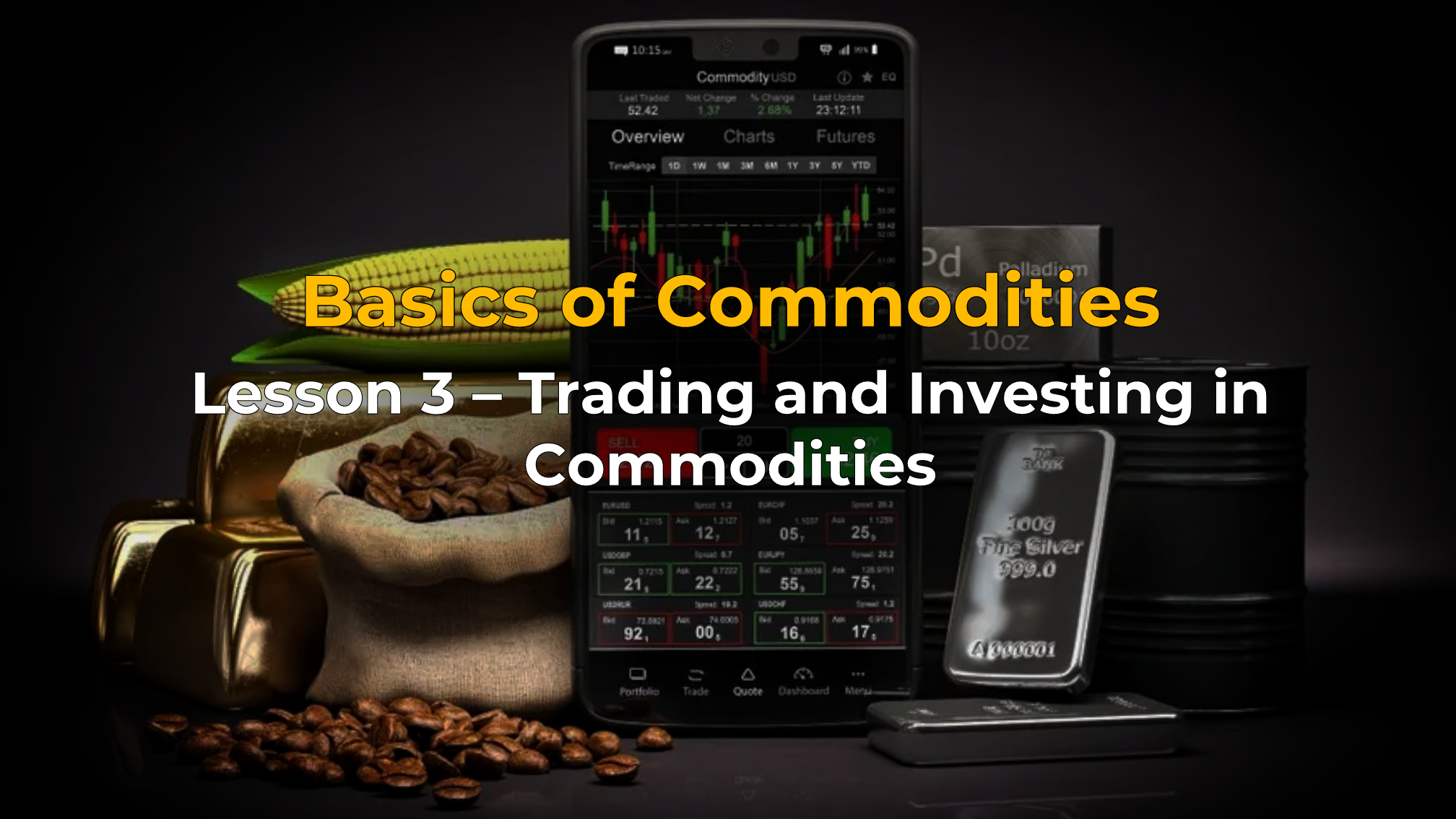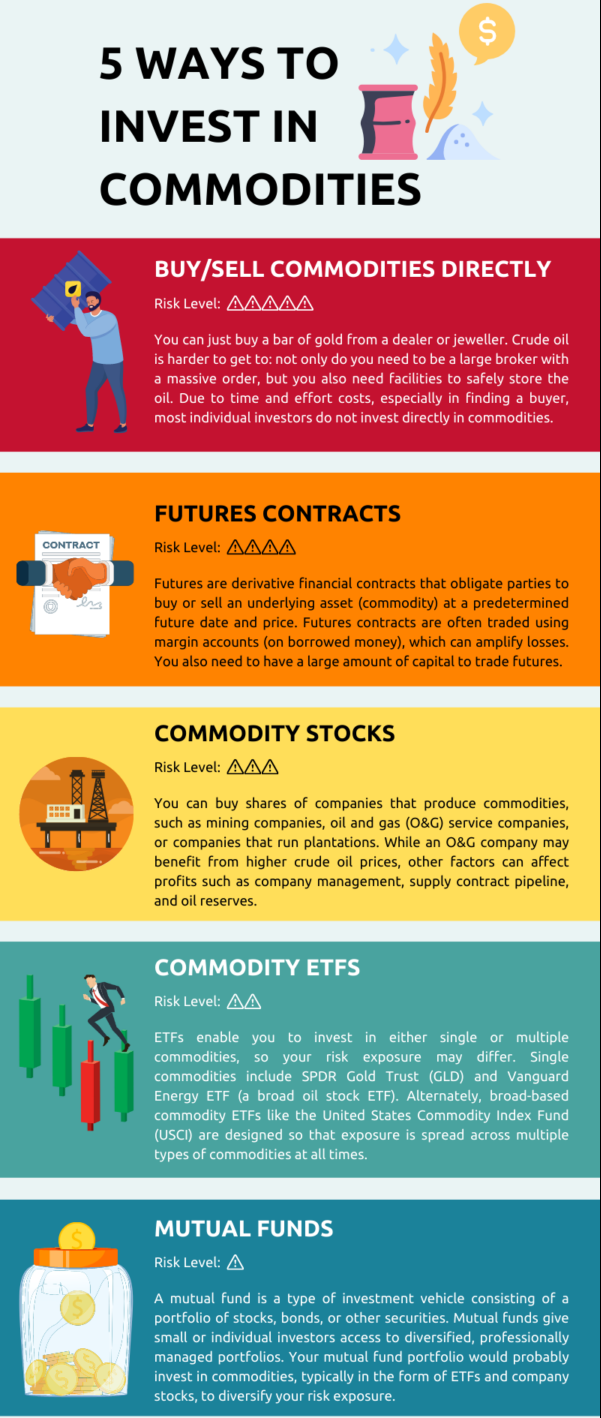
Basics of Commodities Trading: Lesson 3 – Trading and Investing in Commodities
18 January 2024
73 views
Trading Strategies
- Spot Trading: Buying and selling commodities for immediate delivery. Ideal for those who want to take physical possession of the commodity.
- Example: Purchasing gold bars directly from a dealer.
- Futures Contracts: Agreements to buy or sell a commodity at a future date at a predetermined price. Useful for hedging or speculating on price movements.
- Example: Entering into a contract to buy crude oil at $70 per barrel with delivery in three months.
- Options Contracts: Gives the right, but not the obligation, to buy or sell a commodity at a specific price before a certain date. Useful for managing risk or speculating.
- Example: Buying a call option on wheat with a strike price of $6 per bushel.
- Commodity ETFs and Mutual Funds: Investment funds that track the price of commodities or commodity indices. Provides exposure to commodities without directly trading them.
- Example: Investing in an ETF that tracks the performance of a basket of agricultural commodities.
Key Considerations
- Leverage: Futures and options trading often involves leverage, which can amplify both gains and losses. Use leverage cautiously.
- Example: A small change in commodity prices can result in significant gains or losses when using leveraged positions.
- Volatility: Commodities can be highly volatile due to changes in supply and demand, geopolitical events, and market sentiment. Be prepared for price swings.
- Example: Oil prices can fluctuate widely due to global political instability.
- Storage and Handling Costs: For physical commodities, consider costs related to storage and transportation.
- Example: Storing large quantities of grain may require significant storage facilities.

Risk Management Strategies
- Diversification: Spread investments across different commodities to reduce risk.
- Example: Investing in a mix of metals, energy, and agricultural products.
- Hedging: Use futures or options to protect against adverse price movements.
- Example: Hedging against falling oil prices by selling oil futures contracts.
- Setting Stop-Loss Orders: Automatically sell a commodity position if it drops to a certain price to limit losses.
- Example: Setting a stop-loss order for a gold investment to sell if the price falls below a predefined level.
Example: Investing in Gold
- Spot Investment: Buy physical gold bars or coins.
- Futures Contract: Purchase a futures contract for gold with a delivery date six months in the future.
- Options Contract: Buy a call option on gold with a strike price of $1,900 per ounce.
- ETF: Invest in a gold ETF that tracks the price of gold.
Conclusion
Effective trading and investing in commodities require a solid understanding of various strategies, risk management techniques, and market dynamics. By implementing these approaches, you can make more informed decisions and better navigate the complexities of the commodities market.
This concludes the Basics of Commodities Trading course. You are now equipped with the fundamental knowledge to start exploring and investing in commodities. Keep learning and practicing to enhance your investment skills and achieve your financial goals.




